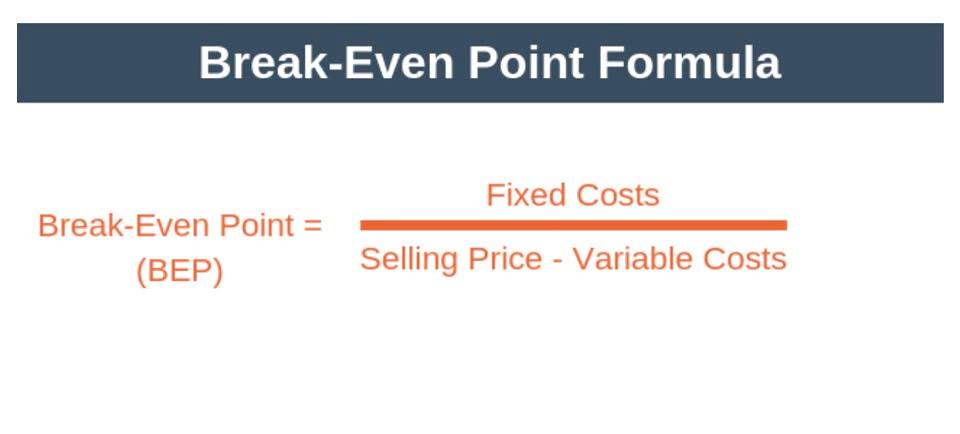What Is Opportunity Cost?

If the student could have earned $20,000 per year, then the true cost of the year’s schooling is $12,000 plus $20,000, for a total of $32,000. Of this $32,000 total, the student pays $24,000 ($4,000 in tuition plus $20,000 in forgone earnings). In other words, even with a hefty state subsidy, the student pays 75 percent of the whole cost. This explains why college students at state universities, even though they may grouse when the state government raises tuitions by, say, 10 percent, do not desert college in droves. A 10 percent increase in a $4,000 tuition is only $400, which is less than a 2 percent increase in the student’s overall cost (see human capital). When economists refer to the “opportunity cost” of a resource, they mean the value of the next-highest-valued alternative use of that resource.
- The opportunity cost of capital therefore is a very useful concept for business analysis and decision making.
- As the PPF is concave to the origin, it shows how the opportunity cost of producing more of one good continuously increases.
- For example, if in a firm a piece of machinery breaks down as mentioned earlier, in addition to the cost of repairing which is an explicit cost there is also an implicit cost of loss in production.
- Opportunity cost is the amount of potential gain an investor misses out on when they commit to one investment choice over another.
- All persons confront uniform relative prices for goods; this is a necessary condition for the absence of further gains-from-trade.
- Tuition and fees are not, for most college students, the major cost of going to college.
- Take a student who annually pays $4,000 in tuition at a state college.
You don’t want to choose the wrong investment option and incur the wrong opportunity cost, after all. Opportunity costs may have explicit financial costs, like when you choose to use your dollars for one thing instead of another, or implicit costs. The latter won’t hurt your wallet but will cost you the chance to do other things with your time or energy, which actually can have indirect impacts on your finances. Opportunity cost is the value of what you lose when you choose from two or more alternatives. When you invest, opportunity cost can be defined as the amount of money you might not earn by purchasing one asset instead of another. As an investor, weighing out the opportunity cost of each investment decision you make can help you make the most prudent decisions.
Implicit Costs
The investment information provided in this table is for informational and general educational purposes only and should not be construed as investment or financial advice. Bankrate does not offer advisory or brokerage services, nor does it provide individualized recommendations or personalized investment advice. Investment decisions should be based on an evaluation of your own personal financial situation, needs, risk tolerance and investment objectives.

It implies, for example, that even when governments subsidize college education, most students still pay more than half of the cost. Take a student who annually pays $4,000 in tuition at a state college. Assume that the government subsidy to the college amounts to $8,000 per student. It looks as if the cost is $12,000 and the student pays less than half. The true cost is $12,000 plus the income the student forgoes by attending school rather than working.
thoughts on “Opportunity Cost Definition”
Even making no decision is itself a decision with costs, especially when you consider the sleeper costs of inflation. Carefully constructed portfolios provide guidelines for the percentage of each type of asset you should hold to help mitigate the uncertainty of any one asset or asset class doing very well or very poorly over time. “This reduces the investor’s decisions from looking at every opportunity to a manageable question of ‘How much of each asset class should I hold?
It doesn’t cost you anything upfront to use the vacation home yourself, but you are giving up the opportunity to generate income from the property if you choose not to lease it. Explicit and implicit costs can be viewed as out-of-pocket costs (explicit) and costs of using assets you own (implicit). While opportunity cost is not an exact measure, one way to quantify it is to estimate the potential future value that you opted not to receive and compare it with the value of the choice you made instead. If your current bond “A” has a value of $10,000, you can sell it to help purchase bond “B” at a slightly lower rate. Bond “B” has a face value of $20,000—so you’d spend an additional $10,000 to purchase bond “B.” To determine the best choice, you need to weigh the options. Opportunity cost is the amount of potential gain an investor misses out on when they commit to one investment choice over another.
How To Calculate Opportunity Cost
You’ll still have to pay off your student loans whether or not you continue in your chosen field or decide to go back to school for more education. Take, for example, two similarly risky funds available for you to invest in. One has the potential to return 8 percent and the other 10 percent. The opportunity cost of the 10 percent return is forgoing the 8 percent return. Inversely, the opportunity cost of the 8 percent return is the 10 percent return. Even if you select the 10 percent return – and therefore earn a better overall return – your opportunity cost is still the next best alternative.

For example, if a piece of machinery in the firm malfunctions, the repairing cost is explicit. The repairing and reinstalling work will have to be paid in cash and the transaction is charged in the books of accounts as an expenditure. The sunk cost can be defined as the financial cost which is already invested and now it cannot be incurred or money you cannot get back.
A good measure of this “opportunity cost” is the income that a newly minted high school graduate could earn by working full-time. During the 1980s and 1990s, this forgone income rose only about 4 percent in real terms. Therefore, even a 67 percent increase in real tuition costs in twenty years translated into an increase of just 20 percent in the average student’s total cost of a college education. When it comes to your finances, opportunity cost works identically. Each choice you make has positive and negative repercussions and may cost you in different ways. Robert Johnson, a professor of finance at Creighton University, points to a classical example of the returns caution-minded investors miss out on when they downplay stocks in favor of more secure investments long term.
- According to this concept, if with a given amount of money a consumer chooses to have more of one thing, then he needs to have less of the other.
- While the definition of opportunity cost remains the same in investing, the concept is a bit more nuanced because of potential differences among investments.
- But once you understand opportunity cost is a factor you should weigh, the amount of opportunities to consider may seem intimidating.
- For example, what would have happened if Walt Disney had never started animating?
- Opportunity cost is the extra return on an alternative available over and above the chosen option.
- There’s no way of knowing exactly how a different course of action will play out financially over time.

0 comment